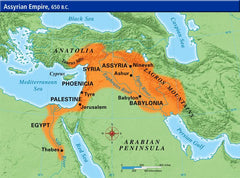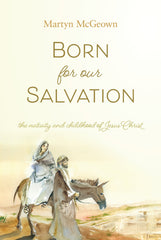Your cart is empty now.

Book Review: The Reformed Baptism Form (2)
The Reformed Baptism Form: A Commentary, B. Wielenga, trans. Annemie Godbehere, ed. David J. Engelsma. Reformed Free Publishing Association, 2016, 425 pages. Reviewed by Rev. Nathan J. Langerak.
For those who still love the truth of the covenant in the baptism form, the translation and publication of this commentary are significant. The commentary can be read with great profit. Wielenga in the main is sound in his exposition of the baptism form. Take for example his exposition of the form’s teaching of the antithesis: By his being incorporated into Christ, of which baptism is sign and seal, the world has become his enemy and he has become enemy of the world. The water of baptism was a sign to him of an irreconcilable antithesis (245). This thrills and instructs the Reformed believer. Throughout Wielenga gives new life to old, familiar phrases that, if they have not bred contempt through their familiarity, are frequently read over without much thought. His practical warnings against using baptism out of custom—parents who are so concerned about the baptism gown but do not exchange a single word about the significance of the sacrament—and against parents who wait for relatives and put off the sacrament so long that the baptized child might well reach up to shake the baptizing minister’s hand should be taken to heart and not rejected out of hand as mere opinion from a bygone era. Without doubt, the lover of Reformed covenantal doctrine who reads this commentary will come away with a new appreciation for and many fresh insights into the language of the form.
Once or twice Wielenga strays from the language of the form and gives his opinions. Then Wielenga makes statements with which the Protestant Reformed Churches and any right-thinking Reformed man would strongly disagree. Wielenga writes about Esau and God’s covenant, “The promise and seal in baptism of the washing away of sins through Jesus Christ was also to the Edomite, but he simply disregarded its admonition…God established the covenant with him also, but he brusquely broke this covenant” (54–55). This is bad and an anomaly in his commentary. Indeed, just prior to this statement and throughout the commentary, he makes clear that the object of the promise of baptism is the elect. In another instance when he explains the upbringing of children, he strays into the error of common grace: “Clothing, cleaning, taking care of the young child are outside the promise of baptism. They are all based on creation, not on re-creation. The life of human beings, as long as they have not come to the years of discretion, reveals itself exclusively as an animal life, which belongs to the realm of common grace” (350).
These stumbles bring up a particularly helpful feature of the commentary, the editor’s footnotes. Wielenga included some footnotes in his commentary. The translator provides a few footnotes. The editor includes many more. The footnotes are a worthy, worthwhile addition to the commentary. These notes are of differing kinds. In some the editor explains some obscure Dutch phrase, idiom, or person. In others, and these are by far the most helpful, the editor comments on the covenantal theology taught by Wielenga, making clear the issues and how they bear today on questions regarding the covenant. Adding to the value of the notes is that in many of them the editor does his own original translation work or brings his knowledge of the covenantal questions and contemporary controversies to bear on the issues raised by Wielenga. For instance, when the editor responds to Wielenga’s comment about the promise being made to Esau, he translates from Kuyper’s untranslated work, The Doctrine of the Covenants. Kuyper clearly contradicts the position espoused by Wielenga: “The covenant of grace is absolutely not an uncertain covenant, but on the contrary an absolutely certain covenant that only and exclusively has the elect in view.” Kuyper also criticizes as “Arminian” the idea that the promise of baptism is given to all the baptized children (57). In other notes the editor points the reader to helpful resources for further study. The notes are an invaluable aide for the reader. They allow him to grasp easily the arguments in more difficult places and point him to the contemporary relevance of the baptism form and its doctrine.
...to be continued
________________
Rev. Nathan Langerak is pastor of the Protestant Reformed Church in Crete, Illinois. Rev. Langerak was asked by the RFPA to write a book review on this title.
___________
The content of the article above is the sole responsibility of the article author. This article does not necessarily reflect the opinions and beliefs of the Reformed Free Publishing staff or Association, and the article author does not speak for the RFPA.

Donate
Your contributions make it possible for us to reach Christians in more markets and more lands around the world than ever before.
Select Frequency
Enter Amount










